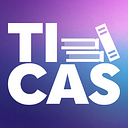A Truly Student-Centered Approach to Education Policy
By: Manon Steel
Since 2020, the world has been challenged to rethink the way we approach education. We — through a commitment to learning and our students — found creative solutions to providing them with interactive instruction and getting them the tools they need to succeed. Though this process was at times painful and frustrating, it forced us to grow beyond traditional barriers, find new pathways, and celebrate the progress, whatever progress, we made. Today, we continue to reconsider what is and is not possible in education and should take this opportunity to reimagine the relationship between K-12 and higher education.
Students live and experience education as a near-constant process. A typical education pipeline begins with early childhood education to kindergarten all the way through to high school, followed by either career-technical education or college. Each step is meant and understood to be one part of a connected whole or a piece in a pipeline. And yet, especially during times of resource scarcity, the policy process itself treats early childhood education, K-12 education, and higher education as a zero-sum game; making new investments in one area means those dollars cannot be used for another. This leads to competition and myopia between stakeholders as well as to the discordant and disconnected system that exists, pipe pieces scattered in space — nearly connected but not quite.
Historically, the different segments of education have had separate budgets, governing systems, and are treated, invested in, and prioritized differently. This has led to unintentional gaps and tensions between the systems in terms of the student experience and policy debate.
For example, during the Great Recession school aid dollars — the primary funding source for K-12 education — were used to help fund higher education. Many felt at the time (and still feel) that this diversion of funds robbed the K-12 system of the necessary dollars to pay for a system that these resources were not intended for and that could raise its own funding through tuition. According to Peter Ruark from the Michigan League for Public Policy, in FY12 the Snyder Administration drew over $450 million from the School Aid Fund for higher education and cut per pupil funding by $470. The practice of shifting school aid dollars to higher education became a norm under the Snyder administration which used at least $350 million school aid dollars per year over eight years to fund higher education.
At the same time, tuition at Michigan’s public four-year institutions soared by over 30 percent while state funding for financial aid was slashed from 6.4 percent to 0.3 percent between 2008 and 2018. As of 2017, state funding for public four-year universities was $9 billion less than it had been in 2008. This depletion in state funding has directly coincided with increases in tuition and increased reliance on students loans, contributing to the current college affordability crisis, a main deterrent for students enrolling in college. In 2020, 58 percent of Michigan college graduates left school with an average $29,863 in student loans.
This further prevents the state from reaching its goal of 60 percent of working age adults achieving a degree or skilled certificate by 2030; a goal grounded in the fact that adults with a postsecondary credential earn more over their lifetime, create a more prosperous Michigan, and live happier, healthier lives.
While it is understandable why in the face of severe resource scarcity K-12 and higher education have both worked to protect their own interests, the result can be a policy approach that hurts students. What is the goal of K-12 if not to produce young people ready to take the next steps in their lives, including, for many, pursuing a postsecondary education? And how can higher education thrive when its students are not adequately prepared? In short, it is in the best interest of both systems to reapproach education policy from a student-centered approach, that embraces the full experience of the education system, rather than only one part of it.
Continued misalignment would only continue to perpetuate these tensions rather than alleviate them. Thus, it is imperative that education stakeholders and policymakers come together to support K-12 education and higher education priorities equally, caring as much about one as they do the other. Examples are academic preparedness, high-quality early college options, and good information on college and career exposure where both sides can contribute to the development of students for their long-term success. At the end of the day, the people most impacted by any of our advocacy and decision-making are students and families and their needs are our true priority.
Manon Steel is a Senior Program Associate in Michigan, at The Institute for College Access & Success.
Originally published at https://ticas.org on April 20, 2023.
